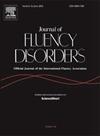治疗与现实之间:对口吃治疗的重点、进展和障碍的生活经验分析
IF 2.1
3区 医学
Q1 AUDIOLOGY & SPEECH-LANGUAGE PATHOLOGY
引用次数: 0
摘要
虽然已经开发了许多治疗方法来帮助口吃(PWS)的人管理他们的状况,但这些干预措施都是由研究人员和语言病理学家的观点所塑造的,显示出有限的有效性和长期影响。此外,他们经常忽视PWS的生活现实,包括他们的挑战、优先事项和价值观。本研究探讨了口吃成人的生活经历,为他们的优先事项、需求、挑战和观点提供见解,为以人为本的治疗实践提供信息。19名口吃的成年人参加了这项研究,他们来自不同的国家和文化背景,有不同的口吃管理经验。为了方便和有目的的抽样,进行了深入的半结构化访谈。通过反身性主题分析对收集到的数据进行分析。研究结果表明,恐惧和回避的自我延续循环是口吃的核心致残经历,限制了情感、认知、社交和专业领域的有意义的参与。与会者强调,打破这种循环需要积极主动的自我接纳,整合口吃矫正、脱敏和非语言沟通策略,以促进有效的沟通。然而,持续的进步受到时间限制、支持不足和治疗模式与现实世界需求不一致的阻碍,特别是那些忽视流利陷阱的治疗模式。许多参与者认为避免口吃,而不是口吃不流利,是他们主要关注的问题,因此强调了治疗方法的必要性,即优先考虑心理弹性而不是流利。这些发现强调了在口吃研究和治疗中需要以人为本的方法,确保有针对性的干预措施是整体的,但有结构的,目标导向的,连贯的,不同的治疗目标是互补的,而不是相互矛盾的,与PWS的生活现实保持一致。本文章由计算机程序翻译,如有差异,请以英文原文为准。
Between therapy and reality: A lived-experience analysis of the priorities, progress and barriers in stuttering management
While numerous therapeutic approaches have been developed to assist people who stutter (PWS) in managing their condition, these interventions have been shaped by researchers’ and speech-language pathologists’ perspectives, showing limited effectiveness and long-term impact. Moreover, they often overlook PWS’ lived realities, including their challenges, priorities, and values. This study explores the lived experiences of adults who stutter, providing insights into their priorities, needs, challenges, and perspectives to inform person-centred therapeutic practices. Nineteen adults who stutter, from diverse countries and cultural backgrounds, and with varying experiences with stuttering management, participated in this study. Using convenience and purposive sampling, in-depth semi-structured interviews were conducted. The collected data were analysed through reflexive thematic analysis. The findings revealed the self-perpetuating cycle of fear and avoidance as the core disabling experience of stuttering, restricting meaningful engagement across emotional, cognitive, social, and professional domains. Participants emphasised that breaking this cycle requires proactive self-acceptance, integrating stuttering modification, desensitisation, and non-verbal communication strategies to foster effective communication. However, sustaining progress was hindered by time limitations, inadequate support, and the misalignment of therapy models with real-world needs—particularly those that overlook the fluency trap. Many participants viewed avoidance, rather than stuttering disfluency, as their main concern, thereby highlighting the need for therapeutic approaches that prioritise psychological resilience over fluency. These findings underscore the need for a person-centred approach in stuttering research and therapy, ensuring tailored interventions that are holistic yet structured, goal-oriented, and coherent, where different therapeutic goals complement rather than contradict each other, aligning with PWS’ lived realities.
求助全文
通过发布文献求助,成功后即可免费获取论文全文。
去求助
来源期刊

Journal of Fluency Disorders
AUDIOLOGY & SPEECH-LANGUAGE PATHOLOGY-REHABILITATION
CiteScore
3.70
自引率
14.30%
发文量
23
审稿时长
>12 weeks
期刊介绍:
Journal of Fluency Disorders provides comprehensive coverage of clinical, experimental, and theoretical aspects of stuttering, including the latest remediation techniques. As the official journal of the International Fluency Association, the journal features full-length research and clinical reports; methodological, theoretical and philosophical articles; reviews; short communications and much more – all readily accessible and tailored to the needs of the professional.
 求助内容:
求助内容: 应助结果提醒方式:
应助结果提醒方式:


